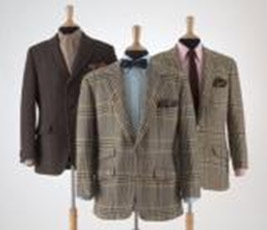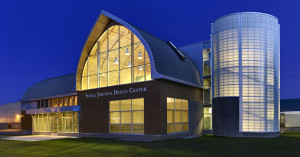
If you’ve ever wondered what college students used to wear to class 100 years ago, the Museum at FIT has the answer. This September, the museum will be exhibiting “Ivy Style,” a look at how the “Ivy League Look” has become a classic form of dressing. While the style originated with wealthy, young men, the style transcended the Ivy League and influenced the way men dressed across the country for decades.
The exhibit at the museum will focus on three periods: the interwar years of the 1920’s to the 1930’s; the post-war era to the end of the 1960’s; and, from the 1980’s to the present. The period items to be featured run the gamut from tweed jackets to letter sweaters, and university reunion and class jackets to athletic wear. Needless to say, current staples like hoodies, caps, and sweats were not a part of these wardrobes.
Pieces will be arranged in vignettes made to look like scenes on a university campus – a student quad, athletic club, and fraternity house. Objects by the following firms will be represented: Brooks Brothers, J. Press, Chipp, Gant, The Andover Shop, Bass, Arrow, Ralph Lauren, Jeffrey Banks, J. McLaughlin, Tommy Hilfiger, Thom Browne, Michael Bastian, and others. Many unique Ivy League objects, such as period photographs and sports ephemera, will be on loan from the Cary Collection, a New York City repository of rare books, fine art, and vintage memorabilia.
A book on the exhibit will accompany the opening. Essays from Patricia Mears, exhibition curator and Deputy Director of the Museum at FIT; scholars Dr. Peter McNeil, Dr. Christopher Breward, and Dr. Masafumi Monden; leading menswear writer G. Bruce Boyer; and founder of the Ivy Style blog, Christian Chensvold will examine the enduring impact of these fashions.
While this look has not inhabited college campuses of late, this exhibit may just be the inspiration needed for a new wave of nicely dressed students on campuses across the state.
“Ivy Style” will be on exhibit from September 14, 2012 to January 5, 2013. For more information on the exhibit, visit the Museum at FIT here.


